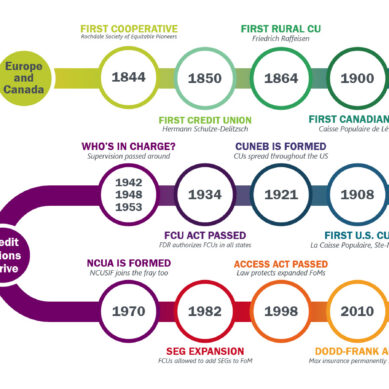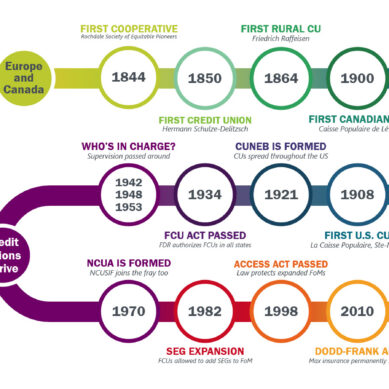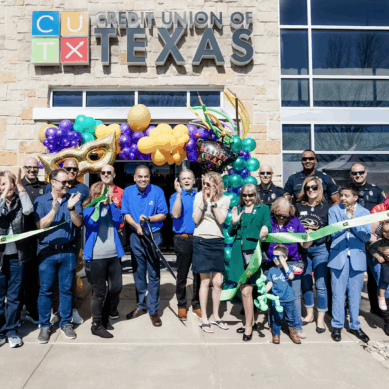In 2018, Forbes did a study stating that 17% of new hires leave within the first 90 days. Today, that number is estimated to be as high as 30%. While turnover is somewhat expected, there are many things a company can do to minimize that. This typically starts off with your recruitment process and ensuring that you hire the right person. While I could speak for days on this topic, today I want to focus on the second piece, which I feel doesn’t get enough attention: onboarding.
As a company, it is equally important that you invest in the new hire onboarding process as much as you invested in finding the candidate. Why, you ask? Let’s think of an iceberg…you can easily see all the costs associated with hiring an employee, ads, recruiter fees, new salary, and benefit costs, but what about all those hidden costs?
Management’s time to find and select the person, overtime to cover the work while the position is open, or lost customer service while being short-staffed. There are many costs we don’t think of, but they all add up. As a company, hiring a new employee is an investment in all those things, so it is critical that you do your part to ensure their success.
A two lane road
Some will argue that it is on the new employee to succeed. Well, that is somewhat true. They will make the decisions about whether they come to work or not. It is on them if they have the aptitude to learn a job, and it is on them to put in the effort.
But let’s think about this for a minute. If a company invests in each person they hire, they go out of their way to make an employee feel welcome and part of the team, to offer training in different formats to fit individual’s needs, then the employee is more likely to put in that effort and use their aptitude to learn their job.
The old adage is true: “Do unto others as you would have done to you.”
What can you do to “invest” in your new employee? Simply put, create an onboarding plan that will set your new employee up for success. While I would like to tell you there is a one-size-fits-all plan, the reality is there isn’t. But there are a few things that I have used over the years that I believe will set you in the right direction. Here are my top six steps to creating an onboarding process that will help any employee become a successful member of your team.
Have a training plan
For this, you will want to, at a minimum, outline for your new employee what the first two to four weeks will look like. Employees will want to know what they are going to learn, who is going to train them, and when they will learn each item.
Start at the beginning when creating your plan; first write out a list of all the items you want your staff member trained on. Then, group them together based on items that need to be taught together. Finish by prioritizing the order they need to be taught in. Next, identify the best trainer for each item. While sometimes you, the manager, may be the best trainer, other times it may be a staff member on the team.
Finally, coordinate the items into a 30-, 60- or 90-day training process. Remember that not everything has to be taught in week one or two. You want to allow time for them to be taught the task, to do the task with someone, and finally to do the task on their own. Some tasks will be more difficult than others, so allow time for retraining or just additional time to master the task.
Now, I want you to think back to when you were a new employee at the company. What are the things you take for granted? Where are the bathrooms, breakrooms, media center, office supplies, mailroom, and much more? Also, think about some of the basic rules or general housekeeping items for the office and be sure to include time in the plan to cover all of them, plus your expectations.
Have written expectations
This, I can’t stress enough. Every manager should have a written expectation document. This should be divided into two areas: one is general for all, the second is job specific.
The first area should cover all the basics:
- Hours expected to work. What hours you expect your team to be at work.
- Attendance and punctuality expectations. What is acceptable from an attendance and punctuality standpoint?
- Conduct expectations. How the team is expected to behave towards customers, towards other employees, towards management. How are they supposed to behave, dress, and interact?
- Decision-making authority. This should include decisions on work performance, financial authority, customer authority, and project specifications.
- Call in procedures. Outline the who, when, and how they need to notify someone if they will be out for any reason.
- Cell phone expectations. Outline what and when cell phone use is allowed or expected in the office, including any after-hours support.
- Departmental expectations (sharing calendars with the team, breaks coordinated with team members, vacation rules, workload sharing rules, etc.).
- Communication expectations. The sky is the limit here. Include email rules, face to face communications with customers, other staff members and management. Include timelines for responding. Include guidelines for meetings and use of systems to coordinate them. Let’s not forget about Zoom, messaging, and chat features.
- Company email or chat signature, branding, and logo expectations. What is allowed or not?
- Teamwork expectations. Another limitless topic. What to do when my work is done? Who to go to for questions? How you expect the team to function together.
The second area will cover the specifics of the job.
- Performance expectations. What are they expected to accomplish daily, weekly, monthly, and yearly? This is a good time to review the job description.
- Quality expectations. What are your expectations for timeliness, accuracy, and attention to detail?
- Accountability expectations. How will you measure their performance?
Follow-up and provide open feedback
Throughout the 30/60/90-day training plan, it will be critical for you to provide feedback. Depending on the position, you may need to provide more consistent feedback to ensure that tasks are done properly and within your expectations. This will help prevent retraining and ensure that bad habits are not created.
Best practice would be to meet at least weekly with your new hire to check in; at a minimum, you should meet with your new person at least every 30 days to review their progress. Ask a series of questions to help you understand how things are going. Remember, your company has invested in this person, it is now your job to ensure their success at it.
- How do they feel the training is going?
- What are they unclear on?
- What tasks do they feel comfortable doing?
- What needs to be adjusted in their training plan?
During this session, you will want to provide your observations and feedback. There is nothing worse than a new employee thinking they are doing great and right on track and you feeling like they are behind and are not picking things up. Having this conversation early and often will allow you to understand their perspective but also allow the new employee to understand where you stand. The goal is to keep you both aligned throughout the onboarding process.
Assign a mentor
When you create your training plan, you will typically assign or take on the task of trainer, but assigning a team mentor is a little different. This is a person who can “show them the ropes.” Someone who isn’t doing the day-to-day training, if possible, is best. This will help the person get better acquainted with the department and company.
If possible, have the person take them to lunch on their first week. This is not a role you should force on someone. You want to assign mentors who are positive, supportive, and who demonstrate the behaviors and attitude that you want to see from your new employee.
Ask lots of questions
In order to provide feedback or to adjust your training plan, you will need to make sure you understand what is going on, so ask lots of questions. You will need to ask questions to the trainer on how things are going. What areas have been taught? What errors have been made? How is their grasp of tasks taught? What is their attitude towards tasks? Are they seeking to find the answers or to have you provide the answers only? What do you as a trainer need from me to help you in this process?
You will want to ask the employee about how they are learning. Is the trainer providing information in a clear and easy-to-understand method? Are they open to questions and not just providing you the answers but showing you how to find them? Are you moving at a fast enough or slow enough pace? Do you feel you have a grasp of the task, or do you need additional training? What do they need from you to help them achieve their goals?
Address issues swiftly
Without fail, you will run into issues during your onboarding process. These issues may be resources, performance, or maybe just a change process or product. How you respond to these issues will be important.
When we talk about resource issues, this might be software or hardware issues, training resources, money, or many other items. As a manager, one of your jobs is to prepare for foreseeable issues.
Realistically, not everyone will end up being the right fit for your organization. You should address problems as they come up, and if you can’t see improvement or resolve the issue, make the decision to part ways.
Invest in training as much as hiring
If you stay on task and provide a warm, welcoming experience, your new employee will arrive at the success point you want/need. It is important to remember that your company has already invested in this person; now, your job is to do everything you can to help them succeed.


























































